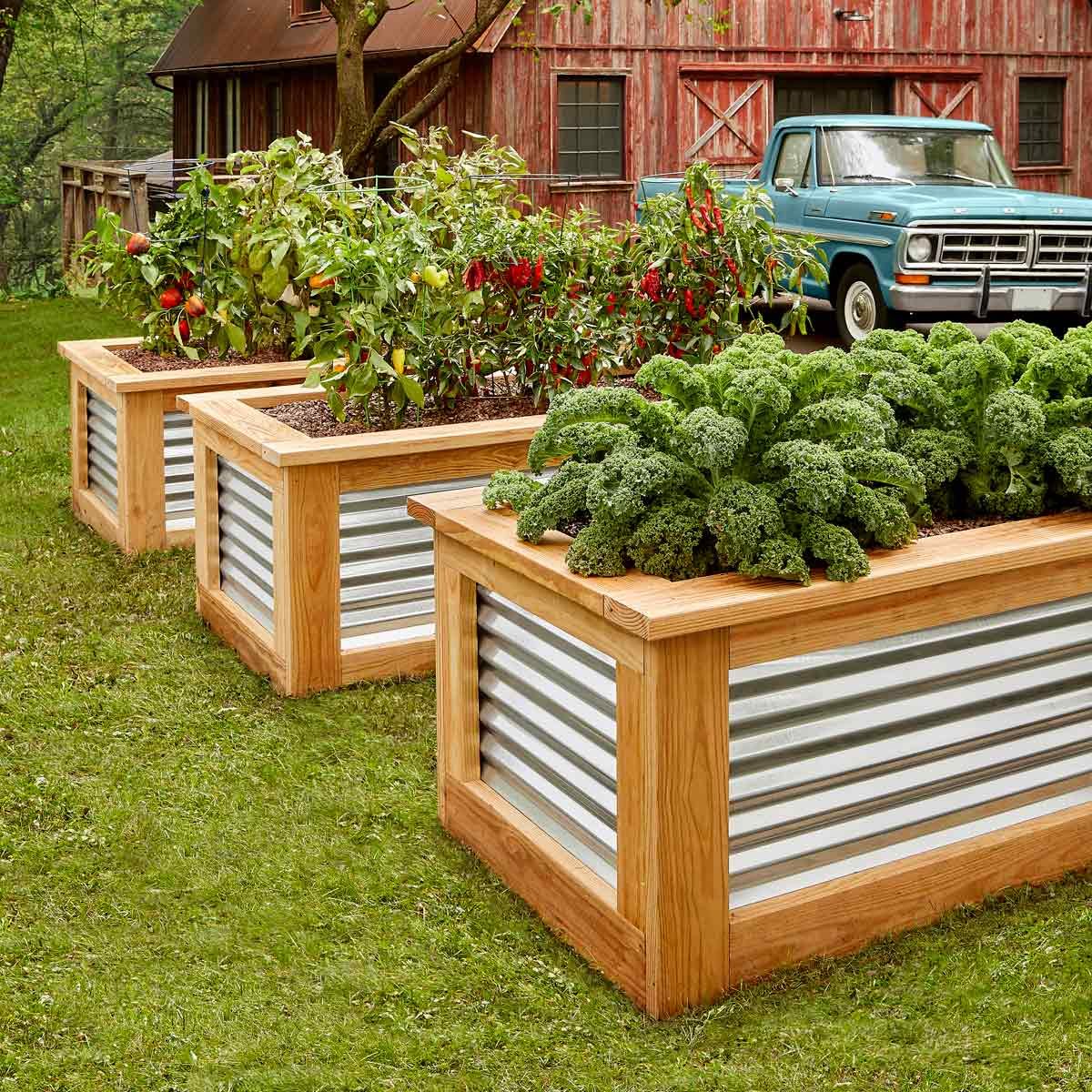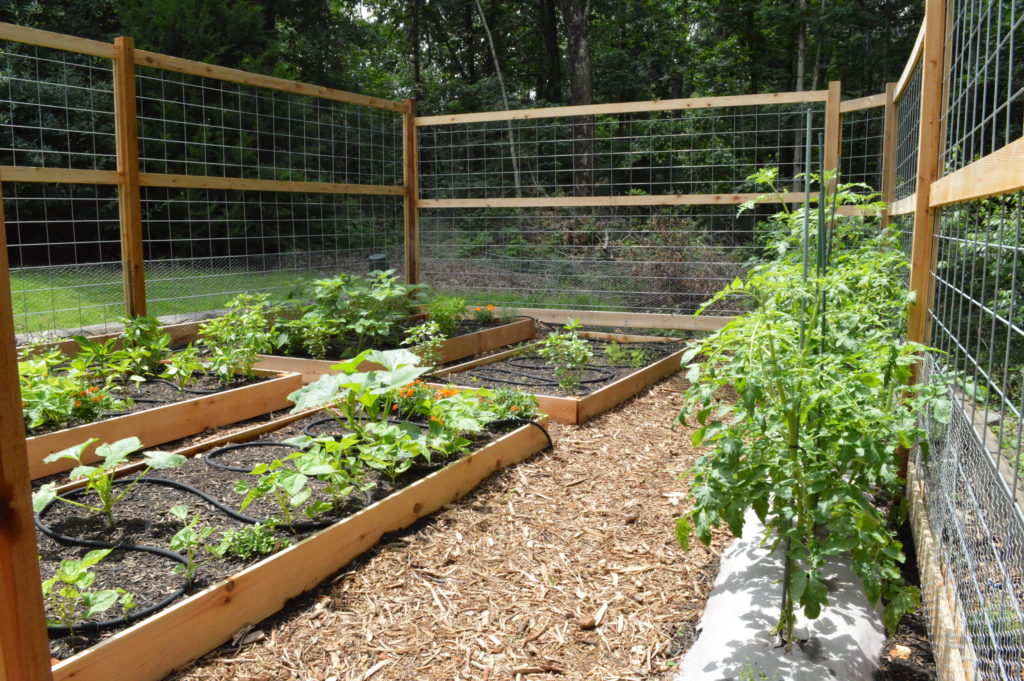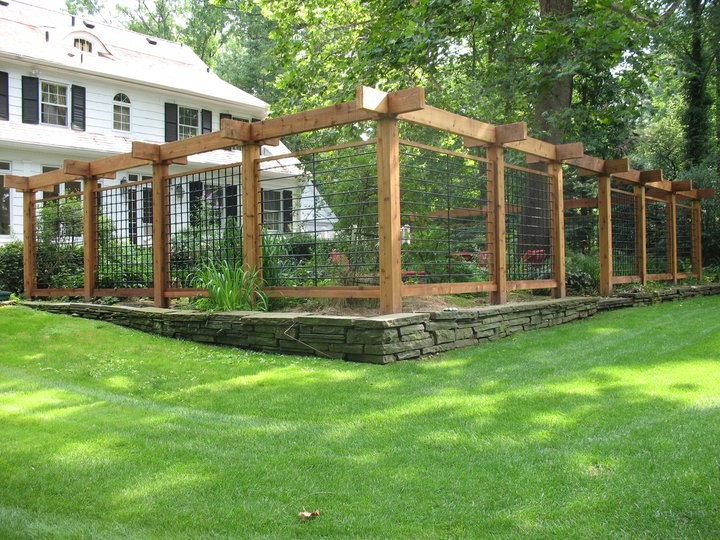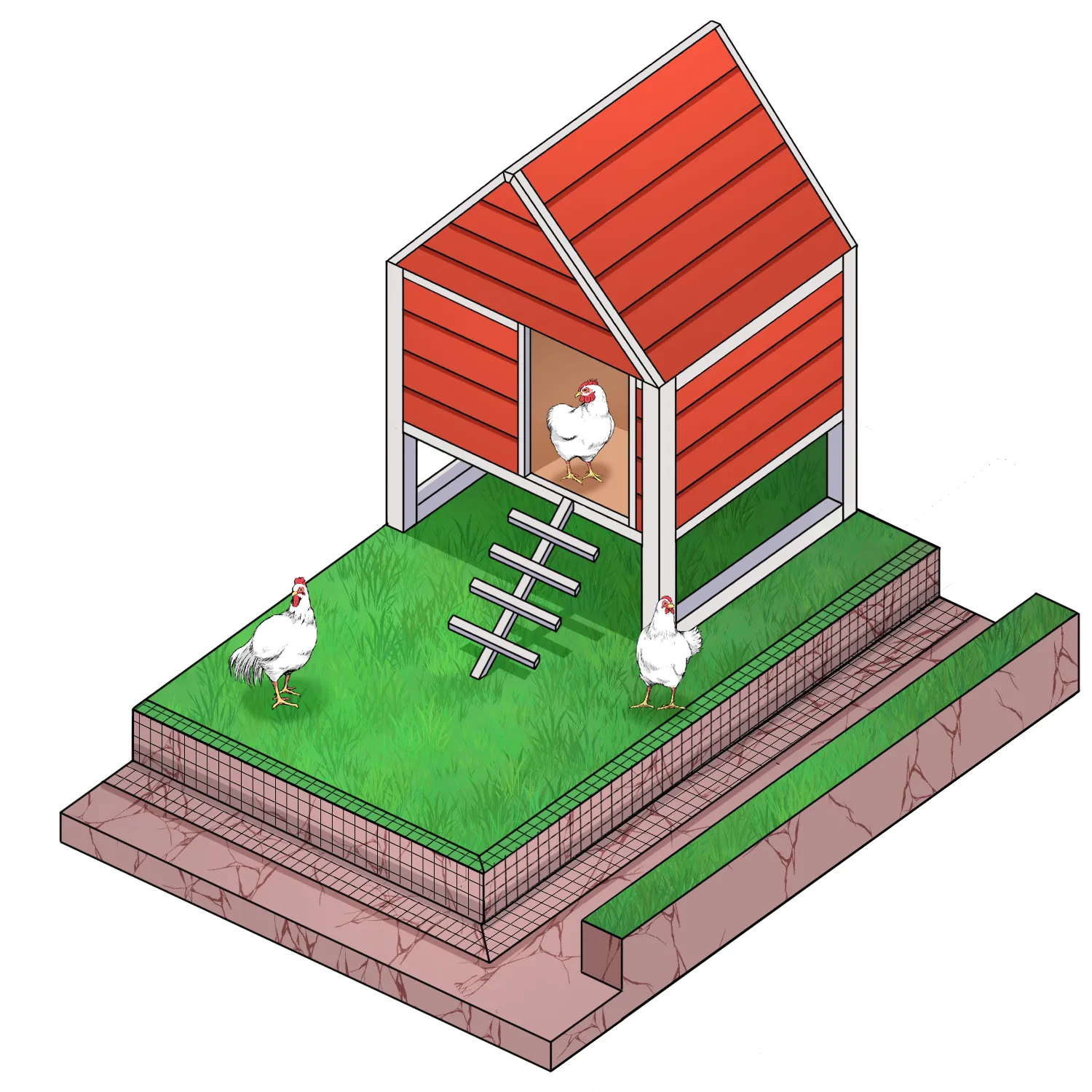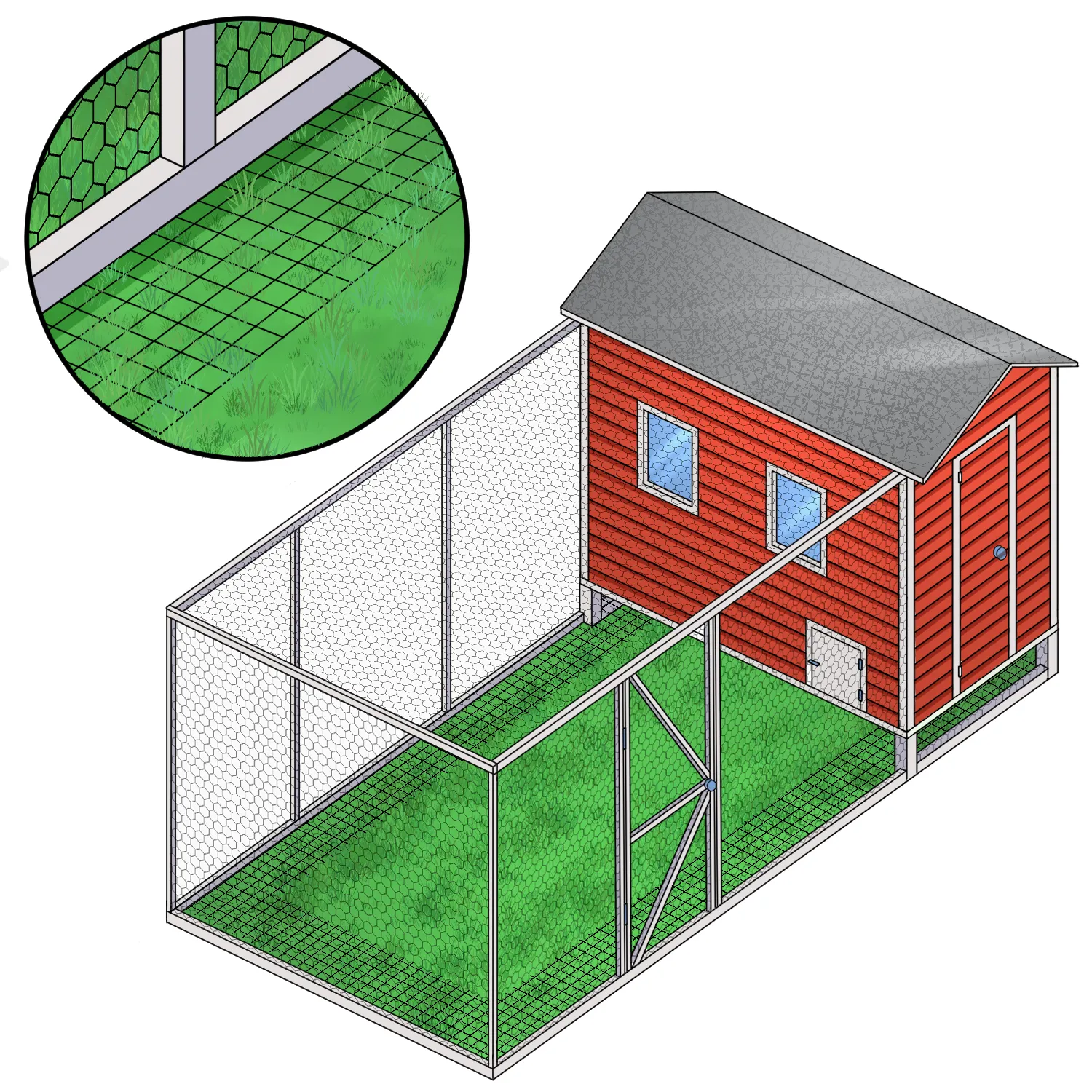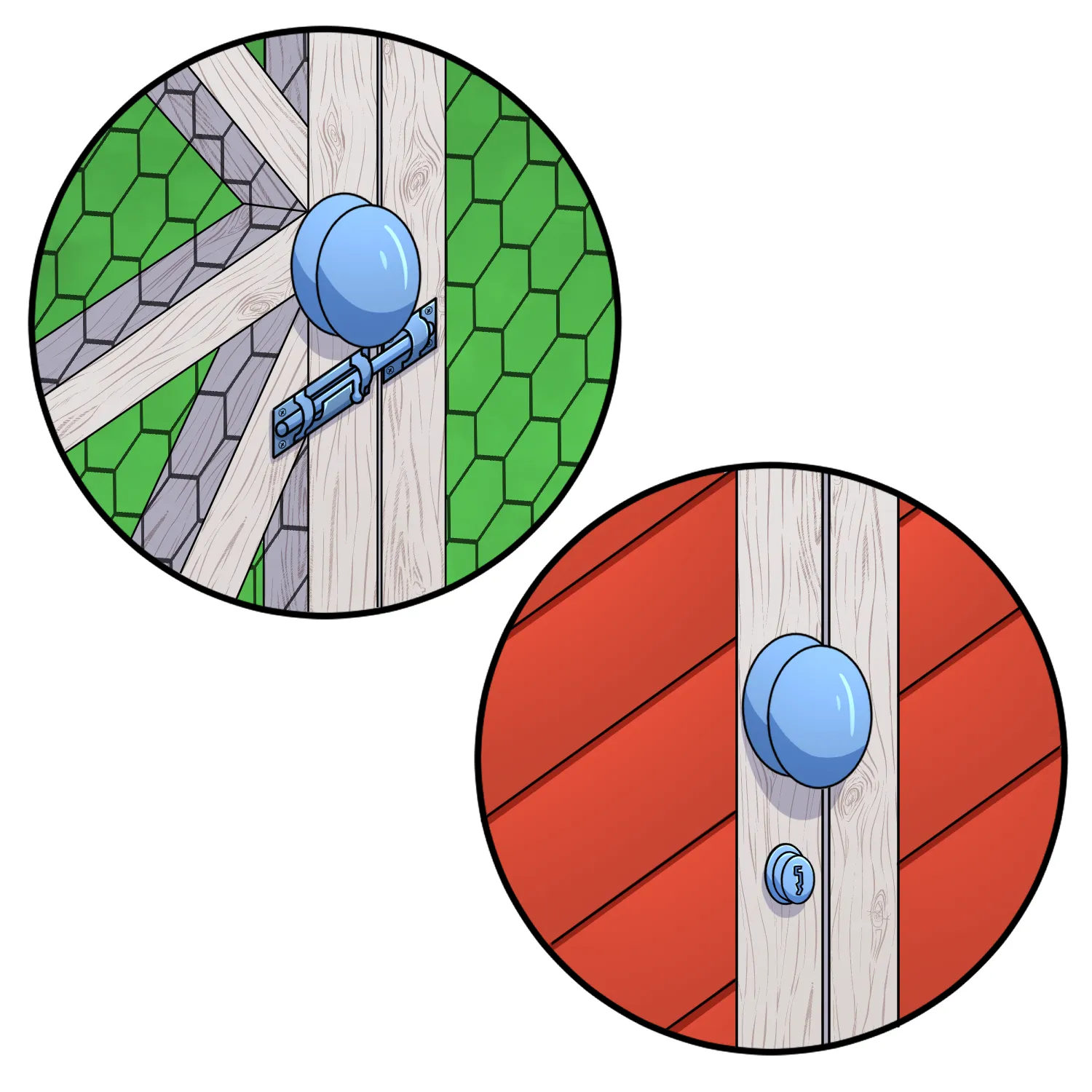🐔 1. Improve Drainage Before You Build
If the area already holds moisture, addressing drainage first will save you a ton of hassle later.
✅ Slightly Elevate the Coop & Run
- If possible, raise the entire coop and run by adding a gravel base (4-6 inches deep).
- This helps water drain away instead of pooling inside the run.
✅ Dig a French Drain (For Persistent Wet Areas)
- If water naturally collects, dig a shallow trench filled with gravel and a perforated pipe to redirect water away from the run.
- Cover it with more gravel or soil to blend in.
✅ Add a Sand or Gravel Layer Under the Run
- Before adding bedding, lay down 2-4 inches of coarse sand or pea gravel to help with drainage.
🐔 2. Use the Right Bedding for Dry Ground
The best moisture-wicking bedding depends on your climate and preference.
✅ Coarse Sand (Best Overall for Drainage & Cleanliness)
- Doesn’t hold moisture like dirt or straw.
- Drains quickly and is easy to clean with a rake.
- Chickens love to dust bathe in it.
✅ Gravel Base + Organic Bedding (For Heavier Rains)
- 1-2 inches of gravel under bedding helps prevent mud.
- On top, use pine shavings, chopped straw, or hemp bedding (all dry quickly).
✅ Deep Litter Method (For Cold or Wet Climates)
- Instead of frequent cleaning, let bedding build up over time (6-12 inches deep).
- Microbial action breaks down waste and generates warmth.
- Works best with pine shavings, straw, or hemp bedding.
🐔 3. Cover & Divert Water from the Run
Even with shade, rain can make things muddy unless you manage it well.
✅ Waterproof Roofing or Tarp
- If the run has a cover, make sure it’s pitched so rain runs off.
- Use corrugated plastic or metal roofing for the best long-term protection.
✅ Gutters & Rain Barrels
- If the coop has a roof, add a gutter system to catch rainwater.
- Direct it away from the run or collect it for watering plants.
✅ Extend the Roof Beyond the Run Edges
- Overhangs prevent rain from dripping inside the run and soaking the ground.
🐔 4. Keep Water Sources From Creating Mud
Sometimes, the waterer itself is the problem!
✅ Use Nipple or Cup Waterers Instead of Open Bowls
- This prevents water from spilling and making a muddy mess.
- Mount it off the ground to avoid splashing.
✅ Place Waterers on a Raised Platform
- Use bricks, pavers, or a wooden pallet to keep them off the wet ground.
✅ Create a “Dry Zone” With Gravel or Sand
- Around the waterer, place a small ring of sand, gravel, or stone pavers to absorb spills.
🐔 5. Rotate & Aerate the Run to Keep It Fresh
If your run is fixed, moisture buildup is inevitable—so maintenance is key.
✅ Rake & Turn the Bedding Weekly
- Stirring bedding helps it dry faster and prevents compaction.
✅ Move the Run Occasionally (If Possible)
- If you can, let an area rest while another section is used.
✅ Add Ventilation to the Coop & Run
- Even in shade, extra airflow will help bedding dry faster.
🐔 What’s the Best Setup for Your Space?
If your run is completely fixed, I’d recommend:
✅ A slightly raised, well-drained gravel base
✅ Coarse sand + deep litter bedding
✅ A sloped roof with gutters to redirect rain
✅ A raised waterer to prevent spills
Layering the Ground in the Main Run:
- Pea Gravel (Base Layer)
- Depth: 2-4 inches
- This acts as the drainage layer. The gravel allows any excess moisture to flow through and keeps the ground from getting waterlogged.
- It also helps elevate the bedding, so your chickens aren’t walking directly on damp soil.
- Coarse Sand (Middle Layer)
- Depth: 2-4 inches
- Sand is excellent for drainage and will help the bedding dry out more quickly, especially in wet or rainy conditions. It also helps keep the ground from becoming muddy.
- Chickens love to dust bathe in sand, so it’s a great addition for both moisture control and chicken enrichment.
- Pine Shavings (Top Layer)
- Depth: 2-4 inches (adjust based on how often you clean)
- Pine shavings absorb moisture and odors, and they’re soft for your chickens’ feet.
- This layer will also serve as a comfortable bedding for your chickens, keeping them dry and cozy.
Why This Works:
- Pea gravel creates good drainage so moisture doesn’t build up.
- Sand wicks away moisture and makes the area more comfortable for chickens to scratch and dust bathe in.
- Pine shavings soak up any remaining moisture, while also providing bedding for comfort and hygiene.
This should keep things dry, clean, and comfortable the girls, even during rainy seasons.
🌟 Weekly Maintenance:
- Rake the Bedding
- Fluff up the pine shavings and sand to help them dry out and aerate the bedding.
- This will also help prevent it from becoming compacted and allow moisture to escape.
- Check for Wet Spots
- If any areas seem to be holding water, you can add more gravel or sand to improve drainage in those spots.
- Make sure there are no puddles forming, as standing water can lead to bacteria or mold growth.
- Clean Out the Waterers
- If you’re using open water bowls, rinse them weekly to prevent algae growth and keep them clean.
- Nipple or cup waterers are a great option to reduce spills and prevent dampness.
🌟 Monthly Maintenance:
- Turn Over the Bedding
- Stir up the bedding in the run to keep it from becoming too compacted.
- This helps air circulate, which speeds up the drying process and keeps the area fresher.
- Top Off Bedding Layers
- If the bedding has settled, add a fresh layer of pine shavings to ensure your chickens have a clean, soft surface to walk on.
- Check for Gaps in the Hardware Cloth
- Inspect the run’s hardware cloth for any weak spots or potential openings that could allow predators to squeeze through.
- Check the Roof/Canopy
- If your run has a tarp or roof, make sure it’s still intact and that no rainwater is pooling on top.
🌟 Seasonal Maintenance:
- Spring Cleaning (After Winter)
- This is a great time to do a more thorough cleaning of the entire run and coop.
- Deep clean the floor by removing old bedding and replenishing with fresh material.
- Scrub the waterers and feeders, and inspect the coop for any wear and tear from the weather.
- Winter Prep
- Before cold weather hits, make sure your run’s roof is waterproof and all the bedding layers are in good shape.
- You may want to add more insulation or move the waterer to an area that’s more protected from freezing.
🌟 Occasional Maintenance:
- Add More Gravel or Sand
- If you notice any spots that have become too soggy, add gravel or sand to improve drainage and help dry out the ground.
- Gravel can be added underneath the sand layer if needed, or you can top off the sand layer to keep it dry and clean.
- Check for Pest Activity
- If you’re in a humid area, check the bedding for signs of mold or fungus.
- If you notice pests or smell mildew, you may need to replace some of the bedding and improve ventilation.
🌟 Bonus Tips:
- Rotating or Moving Your Run: If you’re able to move the run occasionally, it can help prevent wear on the ground and provide your girls with fresh areas to explore.
- Use a Compost Pile: Over time, bedding will break down, so consider starting a compost pile for the old material. Chickens love to help turn the compost if it’s near the run!
- Watch for Scratching: Chickens are great at scratching to find bugs and worms, but they can also create uneven ground. If this becomes a problem, you can add more bedding and top it off every couple of weeks.
These simple but consistent steps should help maintain a dry, healthy, and happy environment for your flock year-round! 🐓💧

